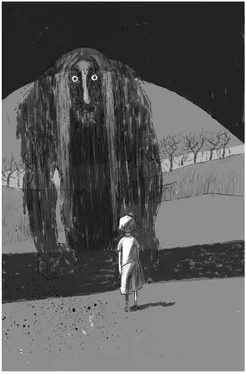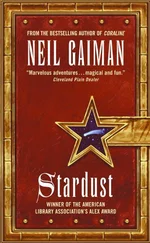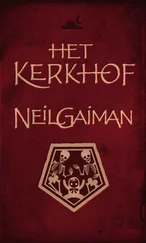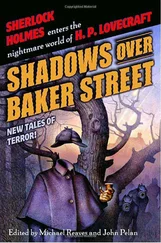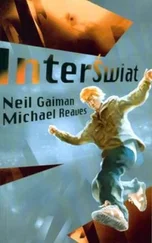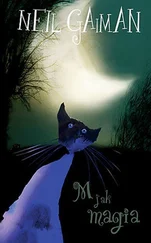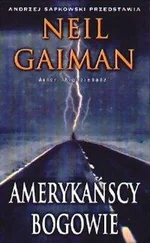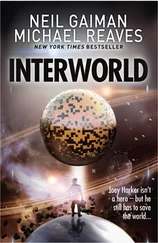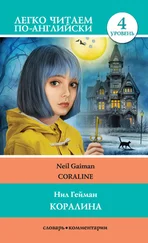“Hi, Sarge, thanks for stopping by. But I hadn’t finished my explanation. If you’ll take a seat I’ll wrap it up.”
He nodded brusquely, and sat down near the door. His gun hardly moved.
I got up from the bed and walked over to the Queen. “You see, toots, what I didn’t tell you was who did have the snaps of your nose job. Humpty did, when you killed him.”
A charming frown crinkled her perfect brow. “I don’t understand…. I had the body searched.”
“Sure, afterward. But the first people to get to the Fat Man were the King’s Men. The cops. And one of them pocketed the envelope. When any fuss had died down the blackmail would have started again. Only this time you wouldn’t have known who to kill. And I owe you an apology.” I bent down to tie my shoelaces.
“Why?”
“I accused you of trying to frame me this afternoon. You didn’t. That arrow was the property of a boy who was the best archer in my school—I should have recognized that distinctive fletching anywhere. Isn’t that right,” I said, turning back to the door, “‘Sparrow’ O’Grady?”
Under the guise of tying my shoelaces I had already palmed a couple of the Queen’s jam tarts, and, flinging one of them upward, I neatly smashed the room’s only lightbulb.
It only delayed the shooting a few seconds, but a few seconds was all I needed, and as the Queen of Hearts and Sergeant “Sparrow” O’Grady cheerfully shot each other to bits, I split.
In my business, you have to look after number one.
Munching on a jam tart I walked out of the palace grounds and into the street. I paused by a trash can, to try to burn the manila envelope of photographs I had pulled from O’Grady’s pocket as I walked past him, but it was raining so hard they wouldn’t catch.
When I got back to my office I phoned the tourist board to complain. They said the rain was good for the farmers, and I told them what they could do with it.
They said that things are tough all over.
And I said, “Yeah.”
THEY PULLED UP MOST of the railway tracks in the early sixties, when I was three or four. They slashed the train services to ribbons. This meant that there was nowhere to go but London, and the little town where I lived became the end of the line.
My earliest reliable memory: eighteen months old, my mother away in hospital having my sister, and my grandmother walking with me down to a bridge, and lifting me up to watch the train below, panting and steaming like a black iron dragon.
Over the next few years they lost the last of the steam trains, and with them went the network of railways that joined village to village, town to town.
I didn’t know that the trains were going. By the time I was seven they were a thing of the past.
We lived in an old house on the outskirts of the town. The fields opposite were empty and fallow. I used to climb the fence and lie in the shade of a small bulrush patch, and read; or if I were feeling more adventurous I’d explore the grounds of the empty manor beyond the fields. It had a weed-clogged ornamental pond, with a low wooden bridge over it. I never saw any groundsmen or caretakers in my forays through the gardens and woods, and I never attempted to enter the manor. That would have been courting disaster, and, besides, it was a matter of faith for me that all empty old houses were haunted.
It is not that I was credulous, simply that I believed in all things dark and dangerous. It was part of my young creed that the night was full of ghosts and witches, hungry and flapping and dressed completely in black.
The converse held reassuringly true: daylight was safe. Daylight was always safe.
A ritual: on the last day of the summer school term, walking home from school, I would remove my shoes and socks and, carrying them in my hands, walk down the stony flinty lane on pink and tender feet. During the summer holiday I would put shoes on only under duress. I would revel in my freedom from footwear until school term began once more in September.
When I was seven I discovered the path through the wood. It was summer, hot and bright, and I wandered a long way from home that day.
I was exploring. I went past the manor, its windows boarded up and blind, across the grounds, and through some unfamiliar woods. I scrambled down a steep bank, and I found myself on a shady path that was new to me and overgrown with trees; the light that penetrated the leaves was stained green and gold, and I thought I was in fairyland.
A little stream trickled down the side of the path, teeming with tiny, transparent shrimps. I picked them up and watched them jerk and spin on my fingertips. Then I put them back.
I wandered down the path. It was perfectly straight, and overgrown with short grass. From time to time I would find these really terrific rocks: bubbly, melted things, brown and purple and black. If you held them up to the light you could see every color of the rainbow. I was convinced that they had to be extremely valuable, and stuffed my pockets with them.
I walked and walked down the quiet golden-green corridor, and saw nobody.
I wasn’t hungry or thirsty. I just wondered where the path was going. It traveled in a straight line, and was perfectly flat. The path never changed, but the countryside around it did. At first I was walking along the bottom of a ravine, grassy banks climbing steeply on each side of me. Later, the path was above everything, and as I walked I could look down at the treetops below me, and the roofs of the occasional distant houses. My path was always flat and straight, and I walked along it through valleys and plateaus, valleys and plateaus. And eventually, in one of the valleys, I came to the bridge.
It was built of clean red brick, a huge curving arch over the path. At the side of the bridge were stone steps cut into the embankment, and, at the top of the steps, a little wooden gate.
I was surprised to see any token of the existence of humanity on my path, which I was by now convinced was a natural formation, like a volcano. And, with a sense more of curiosity than anything else (I had, after all, walked hundreds of miles, or so I was convinced, and might be anywhere ), I climbed the stone steps, and went through the gate.
I was nowhere.
The top of the bridge was paved with mud. On each side of it was a meadow. The meadow on my side was a wheatfield; the other field was just grass. There were the caked imprints of huge tractor wheels in the dried mud. I walked across the bridge to be sure: no trip-trap, my bare feet were soundless.
Nothing for miles; just fields and wheat and trees.
I picked a stalk of wheat, and pulled out the sweet grains, peeling them between my fingers, chewing them meditatively.
I realized then that I was getting hungry, and went back down the stairs to the abandoned railway track. It was time to go home. I was not lost; all I needed to do was follow my path home once more.
There was a troll waiting for me, under the bridge.
“I’m a troll,” he said. Then he paused, and added, more or less as an afterthought, “Fol rol de ol rol.”
He was huge: his head brushed the top of the brick arch. He was more or less translucent: I could see the bricks and trees behind him, dimmed but not lost. He was all my nightmares given flesh. He had huge strong teeth, and rending claws, and strong, hairy hands. His hair was long, like one of my sister’s little plastic gonks, and his eyes bulged. He was naked, and his penis hung from the bush of gonk hair between his legs.
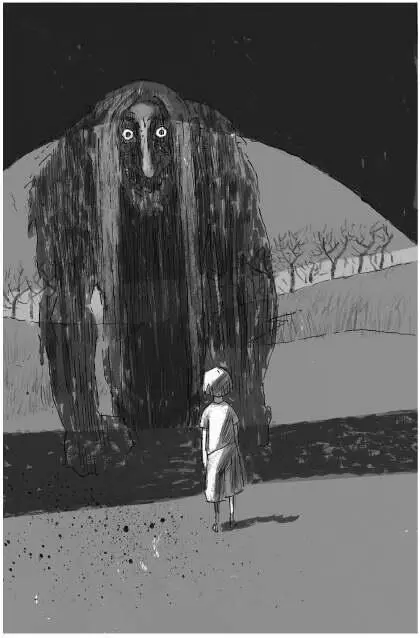
Читать дальше
